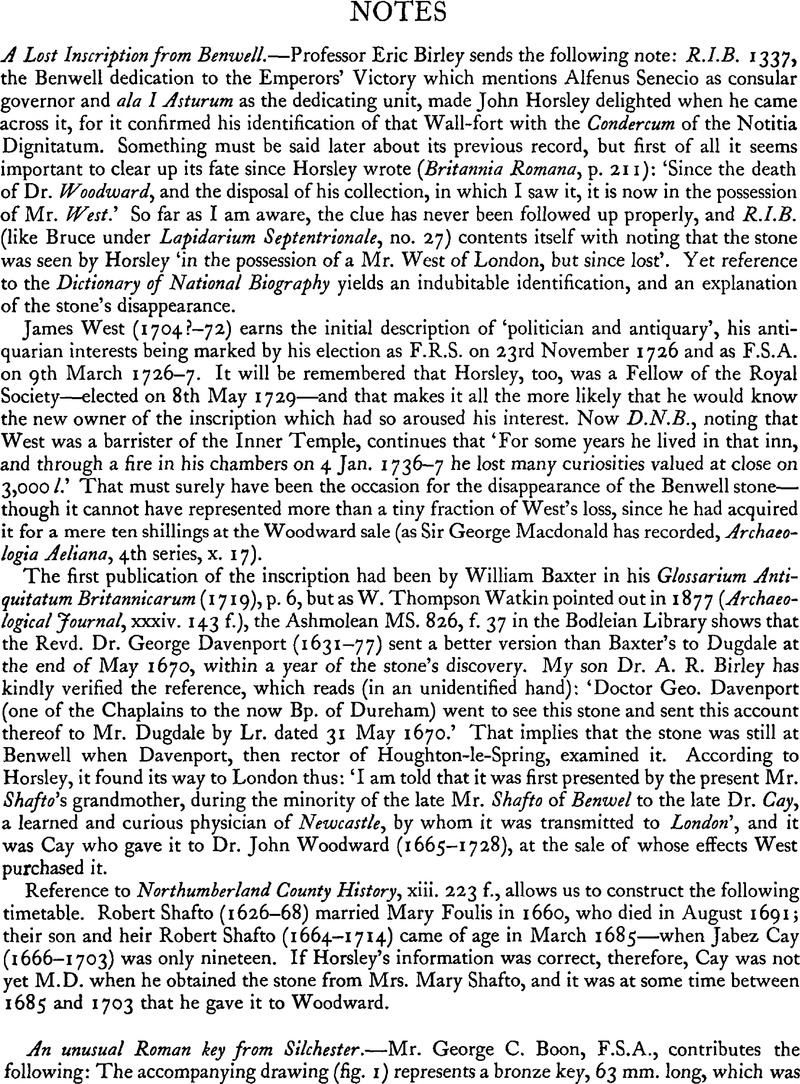No CrossRef data available.
Article contents
An unusual Roman key from Silchester
Published online by Cambridge University Press: 29 November 2011
Abstract

- Type
- Notes
- Information
- Copyright
- Copyright © The Society of Antiquaries of London 1967
References
page 281 note 1 Proc. Hants Field Club, xxi, i (1958), 14f., n. 19; cf. fig. 3cGoogle Scholar.
page 281 note 2 On the Development and Distribution of Primitive Locks and Keys (1883), p. 24Google Scholar.
page 281 note 3 For example, in the British Museum (Depts. of Greek & Roman, and British & Medieval Antiquities). A clear drawing, Brit. Mus. Guide to Greek and Roman Life (1929), fig. 159; typical key, fig. 160c.
page 281 note 4 e.g. ibid., fig. 160e. Probably developed from the latch-key, fig. 160b with ward-plate only: a type reintroduced in the eighteenth and nineteenth centuries.
page 281 note 5 de Montfaucon, Dom Bernard, L’ Antiquité Expliquée iii. i (1719), pl. 54Google Scholar. No comment; after Ch. Fontaine, whose work is inaccessible to me. Re-produced, again without comment, by Liger, F., La Ferronnerie (1875), i, pl. 9Google Scholar, top right: the only specimen of its kind in the rich corpus illustrated in this rare work, for access to a copy of which I am indebted to Mr. William Manning. Something rather like the ‘lower projection’ of the Silchester and Montfaucon keys appears in cruder form in a simpler type of tumbler-key (Liger, op. cit. ii, pl. 52), where it is at right-angles to the pins and must have engaged a ward parallel to the bolt,
page 281 note 6 If this barrel existed, and was hollow, it may have engaged a pin projecting from a sliding subsidiary bolt or movable ward on the back-plate of the lock. Thus only a hollow key could enter the lock fully.
page 283 note 1 To guide the movement of the key, we have suggested that the metal of the lower slot of the keyhole was not cut out, but was bent back at right-angles; fig. 3, on the right-hand side, internally.
page 283 note 2 Liger, op. cit., passim; Ward, Roman Era (1911), fig. 68 A–B, etc.




